Grass insect identification
A guide to turf insect identification
Several insects and mites feed on your lawn, but not all of them cause health or aesthetic damage. While many insects are harmless and even beneficial, some are pests. Only a few cause enough damage to be a problem and they need immediate control. Read More
At Lawn Addicts, we specialise in grass insect identification. Correct identification of the pest can save money and prevent unnecessary pesticide applications.
No matter the type of grass you have, from warm season varieties like couch and buffalo grass, to bent grass and other cool season grasses, we can correctly identify common turf insects and recommend the most effective insecticides and lawn care products available online.
Insects are only one of many potential causes for thin or brown grass. Turf diseases, environmental stress and nutritional disorders can also be damaging. Try to see the grass insects for yourself to confirm it is a pest.
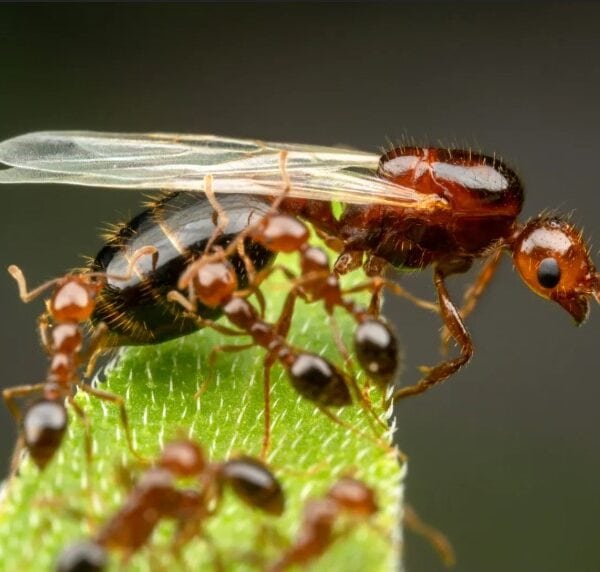
Red Imported Fire Ant – Solenopsis invicta
The Red Imported Fire Ant (RIFA) pose a serious threat to the environment and has had significant environmental, health, and economic impact is ours and other countries. As the name suggests, they are an imported ant and are natives of South America, particularly Brazil, Paraguay, Uruguay, and Argentina. However, they are capable of surviving in most climates around the world. They were first detected in Australia, in Brisbane, on the 22nd of February, 2001. In Australia, unlike other countries, we…
Read More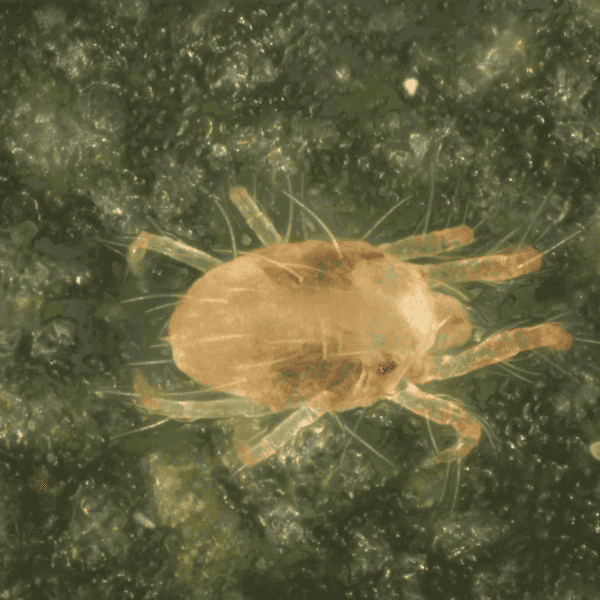
Spider Mite – Tetranychidae spp.
Spider mites are members of the Tetranychidae family, which is reported to contain over 1000 species. Spider mites contain 4 distinct phases of their life cycle. After hatching, they enter the first 6-legged larval stage, then into the protonymph. and Deutonymph, and finally adult. In adult form, they are considered a "medium-sized" mite, only 0.4 mm long, with the females weighing approximately 5 times as much as the male adults. In most species, both the males and females are straw…
Read More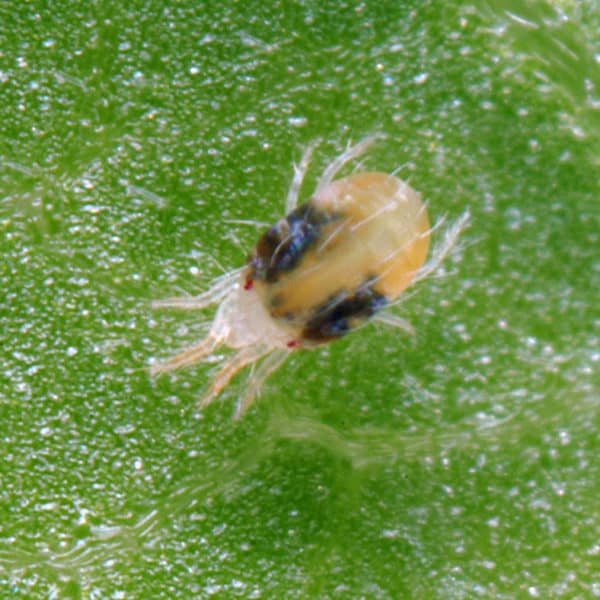
Two Spotted Mite
Two Spotted Mite (Tetranychus urticae) larve hatches from the egg has six legs, is pale yellowish-white, oval and minute. The larva moults to become an eight-legged nymph, which becomes the mature mite after two further moults. The adult female is about 0.5 mm long and the adult male is about 0.3 mm long. In the summer feeding stage the adult females are a yellowish-green, with two obvious dark spots, one on each side of the body. In males these spots…
Read More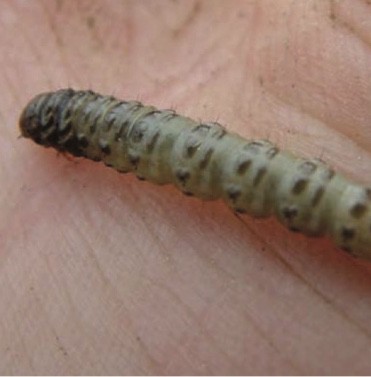
Sod Webworm
Sod Webworm (Herpetogramma licarsisalis) is a relatively thin caterpillar up to 25 mm long, with a pale green-brown body that is marked with characteristic dark spots along its length. When mature the adults become a slender-bodied moth with a wingspan of 2.5 cm. Their wings are grey with black spots and transverse dark, wavy lines. Female sod webworm moths drop their eggs onto turf while flying at night. The eggs fall into the thatch and hatch within 10 days, depending…
Read More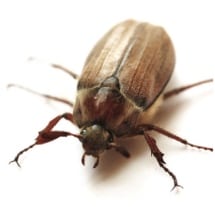
Redheaded Cockchafer
The adult beetle is approximately 13 to 15 mm long and about 8 mm wide and dark brownish-black in colour. The cockchafer grub, which causes lawn damage, is the larval stage of the Redheaded Cockchafer life cycle. The Redheaded Cockchafer, Adoryphorus couloni (Bermeister), is periodically a common pest, especially in areas of south-west and central Victoria and Gippsland districts. It is also a pest in NSW (particularly in the southern tablelands), South Australia (lower south-east region) and Tasmania (northern area).…
Read More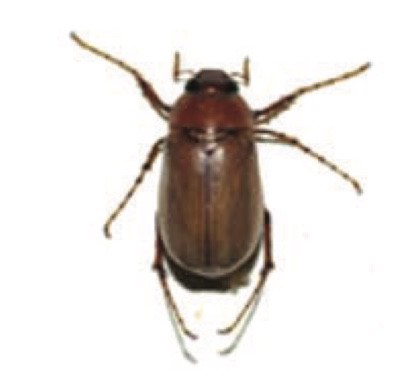
Pruinose Scarab
When mature the adult beetle possesses a dark-brown to black body up to 16 mm long and has a unique set of antenna with large club-like ends. The underside of the body is covered in short grey hairs. The Pruinose Scarab (Sericesthis germinate) larva is a white to creamy-white soft-bodied grub, up to 20 mm long with three sets of legs and a hard, light-brown head. With most scarab pests, the larvae can be difficult to identify between species as…
Read More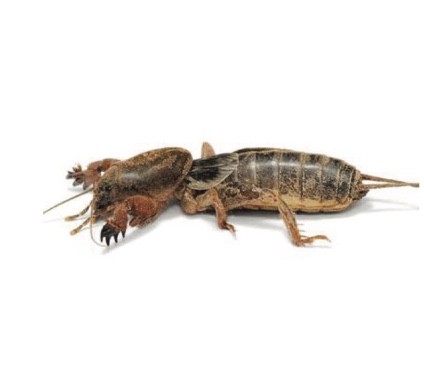
Mole Cricket
The mole cricket (Gryllotalpa spp. & Scapteriscus spp.) is a brown long insect pest with a hard, shiny head, wings and body up to 50 mm long. They have large front legs with jagged claws for digging, and strong l hind legs that are used for removing loose soil while burrowing. Egg laying has been observed to begin from November throughout the warmer months. Adult females construct egg chambers, depositing up to 200 eggs with each egg measuring up to…
Read More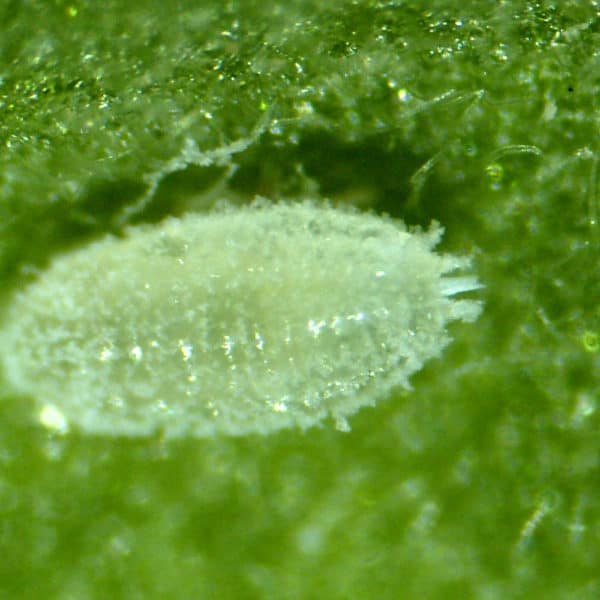
Mealybug
Found in warmer growing climates, mealybugs are soft-bodied, wingless insects that often appear as white cottony masses on the leaf. They feed by inserting long sucking mouthparts, called stylets, into the leaf drawing out sap out of the tissue. Damage is not often much. However, at higher numbers they can cause leaf yellowing and curling as the plant weakens. Mealybug sizes range from approximately 2 mm to 6 mm in length. Adult females deposit 300 to 600 eggs within an…
Read More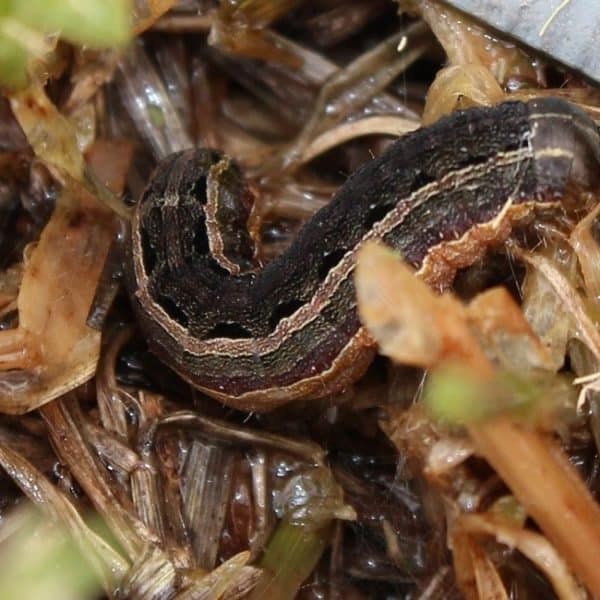
Lawn Armyworm
Lawn armyworm (Spodoptera Mauritia) is a damaging pest when in the larval life stage. The larvae are a soft-bodied caterpillar with a dark-coloured body up to 45 mm long. They possess unique white and yellow striped patterns along the length of the back making them relatively easy to identify. When feeding the larvae often appear in congregations, clumping around stems and foliage of the turf plant. Once mature, the caterpillar metamorphoses into a pale brown moth with a wingspan up…
Read More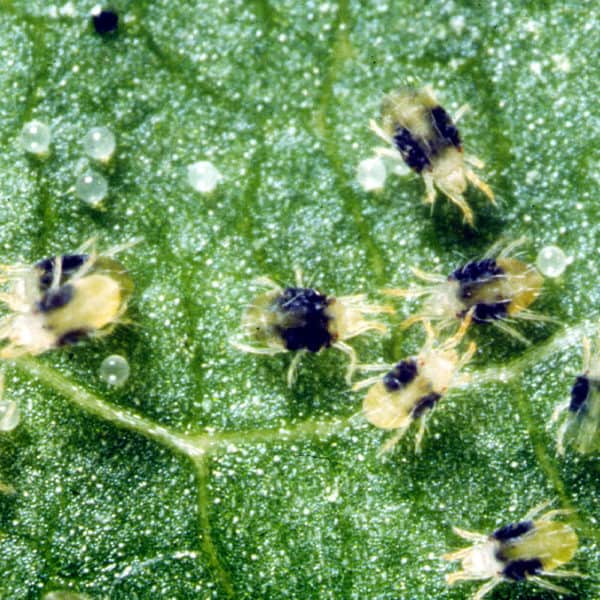
Couch Grass Mite
Couch grass mites (Aceria cynodoniensis) are very small and difficult to see without visual assistance. They are almost transparent to whitish-yellow colour with some darker markings on the outer edge. They have two pairs of legs and an elongated body. Believed to be a native species, this mite now has widespread distribution across Australia. Couch grass mites are active throughout summer, particularly during hot and dry conditions. Reduced mowing height and collection of clippings may help with control. These pests…
Read More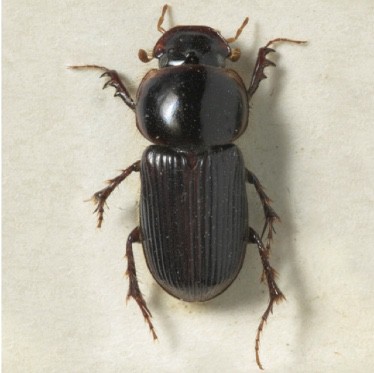
Blackheaded Cockchafer
The Blackheaded Cockchafer (Aphodius tasmaniae) is a native insect of south-eastern Australia, including Tasmania. In Victoria, Blackheaded Cockchafers are mainly active in the Western District, the Southern Wimmera, the North-Central and Central districts, the North-East and Gippsland. They appear to be pests in areas where the annual rainfall exceeds about 480 mm. The Blackheaded Cockchafer has become an important pest of improved lawns, golf courses and parks. Adult Cockchafer beetles are dark-brown to black in colour, have long, fine legs…
Read More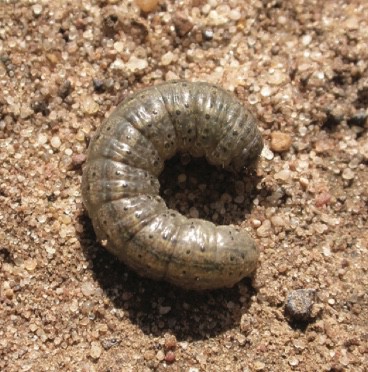
Black Cutworm (Agrotis Spp.)
Black Cutworm is a caterpillar pest found mainly on bentgrass. The larval stage appears as a smooth-bodied, dark-coloured caterpillar with longitudinal lines and brown to black spots on back and sides. When mature, the adult Black Cutworm metamorphoses into a brown moth with a wing span up to 55 mm. The fore-wings are purple-brown with black markings and hind-wings are grey with brown markings. Adult moths lay their eggs in clusters in turfgrass at night and are attracted to the…
Read More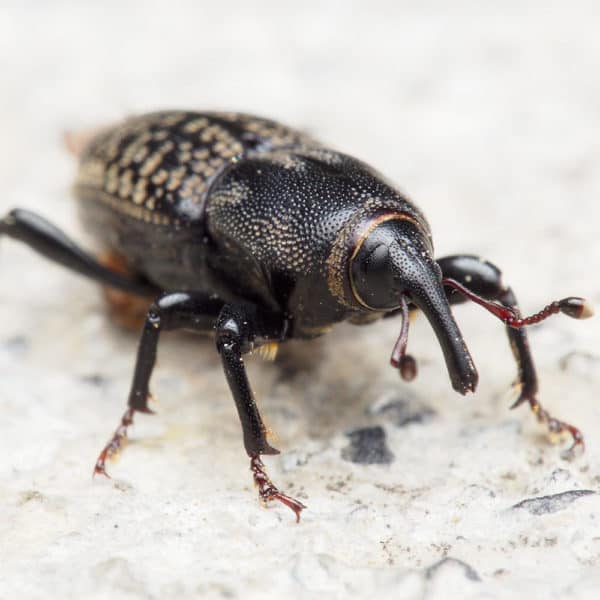
Billbug (La Plata Weevil)
When immature, Billbug (Spenophorus brunnipennis) is a legless, creamy-white ‘C’ shaped larvae with an orange head capsule and a body up to 10 mm long. When mature the larvae metamorphoses dark-brown to black weevil, with a distinctive ‘bill’ like snout and elbowed antennae. Young adults often have dark brown striping on the wing casings and bodies up to 10 mm long. Adult billbugs deposit their eggs within the plant stem, where the larvae develop and feed on the plant. It…
Read More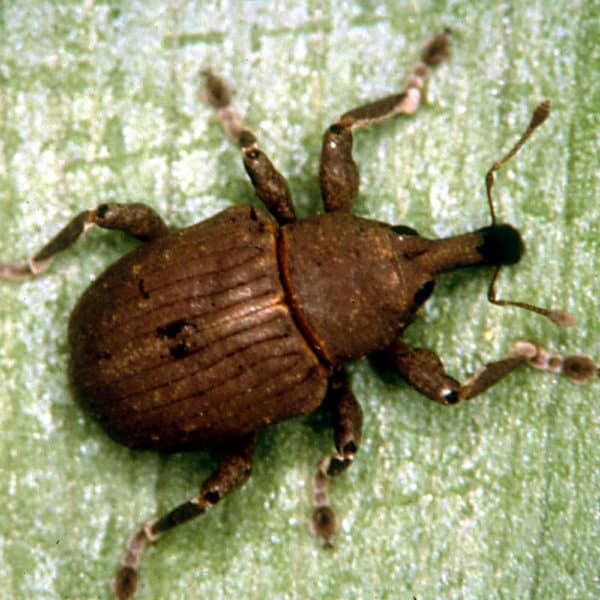
Argentine Stem Weevil
The immature or larval stage of the Argentine Stem Weevil (Listronotus bonariensis) is a legless, creamy-white, active larvae up to 4 mm in length. When mature, the adult appears as a dark grey to black weevil with mottled grey body markings and a distinctive protruding snout, up to 3 mm in length. Adult weevils emerge from overwintering sites between September and November. After mating the female weevil deposits several eggs under the leaf sheath of the host plant. Once the…
Read More
Argentine Scarab
Argentine Scarab (Cyclocephala signaticollis) is very similar in size and shape to the better known African Black Beetle but is a lighter tan-coloured insect and has subtle striping on the wing carapaces. These insects live in the soil and favour turf. Its presence is often indicated by a spongier feel to the turf, which results from the damaged root system, and also by increased bird activity. The Argentine Scarab lays its eggs during summer and this is when the worst…
Read More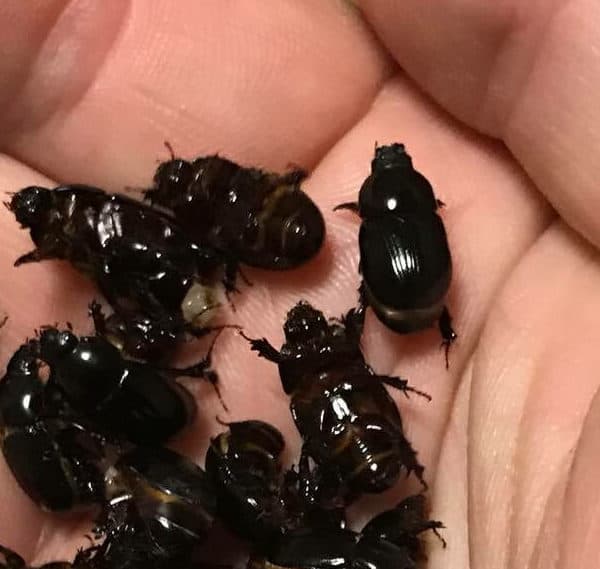
African Black Beetle
Newly hatched African Black Beetle (Heteronychus arator) larvae are about 5 mm long with six legs, white bodies and pale brown heads. Fully grown larvae are 25 to 30 mm in length with a creamy-white body and light-brown head. The rear end has a dark grey tinge. When resting the grubs curl into a C-shape. The adult beetle is a rich chestnut colour when newly emerged, but changes to a shiny black, stout-bodied beetle approximately 10 to 15 mm long.…
Read More
